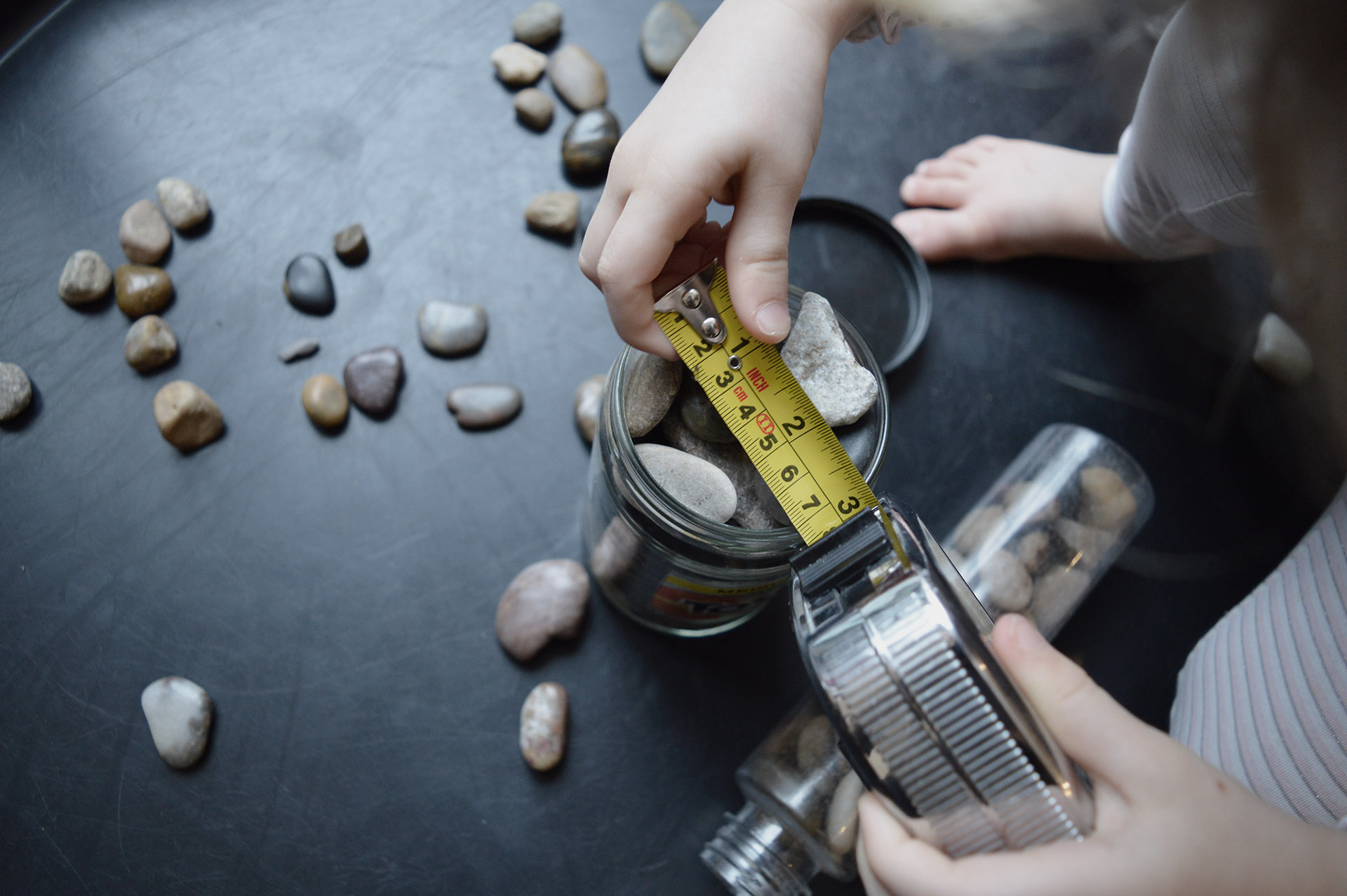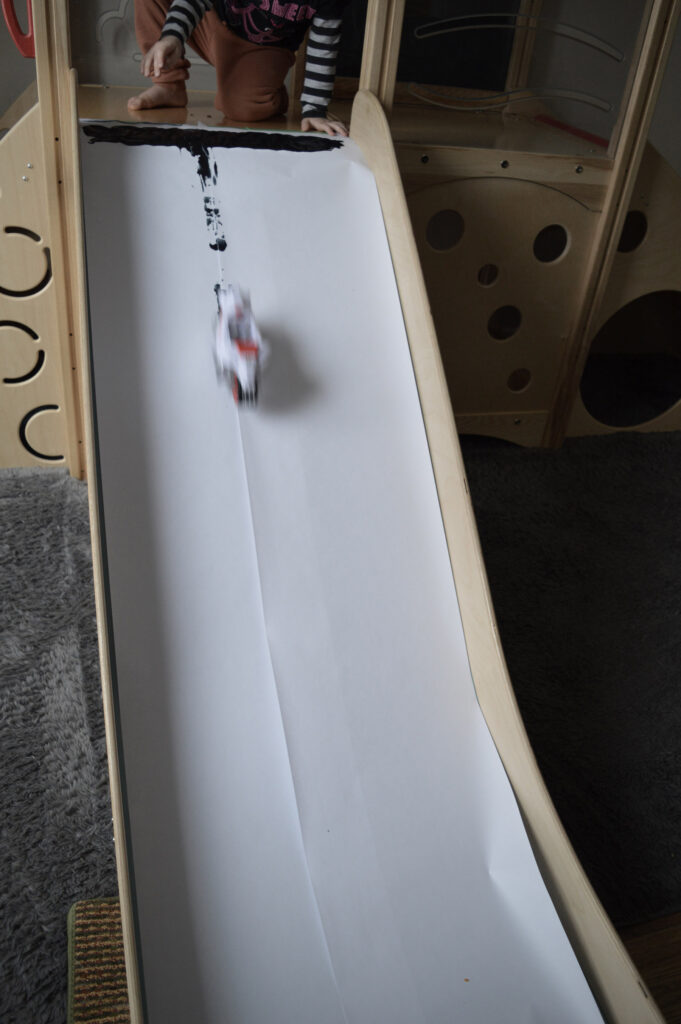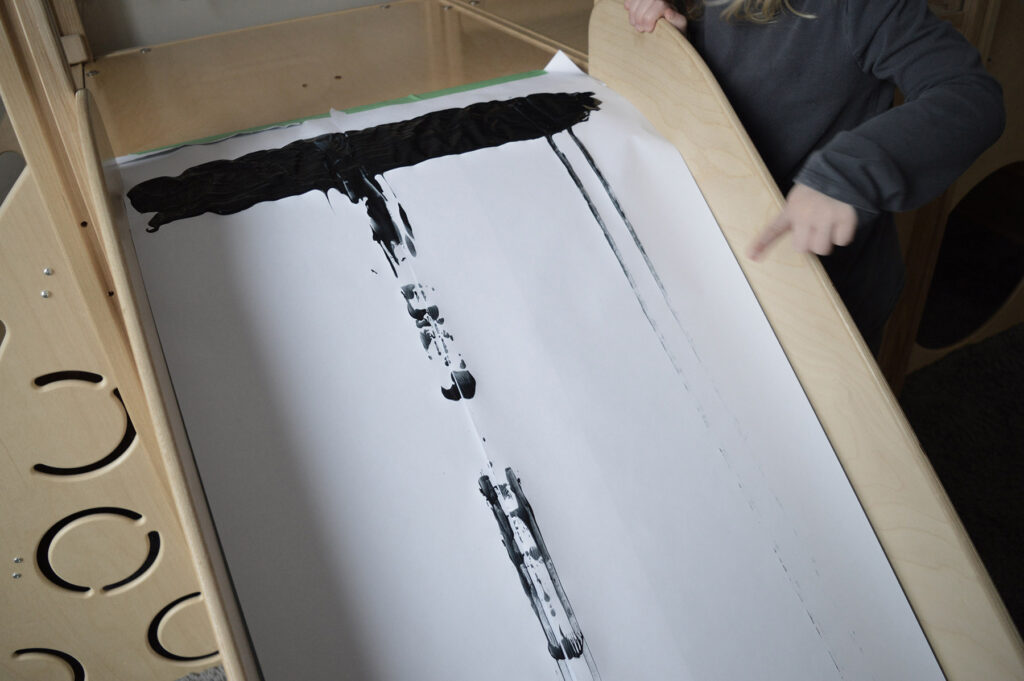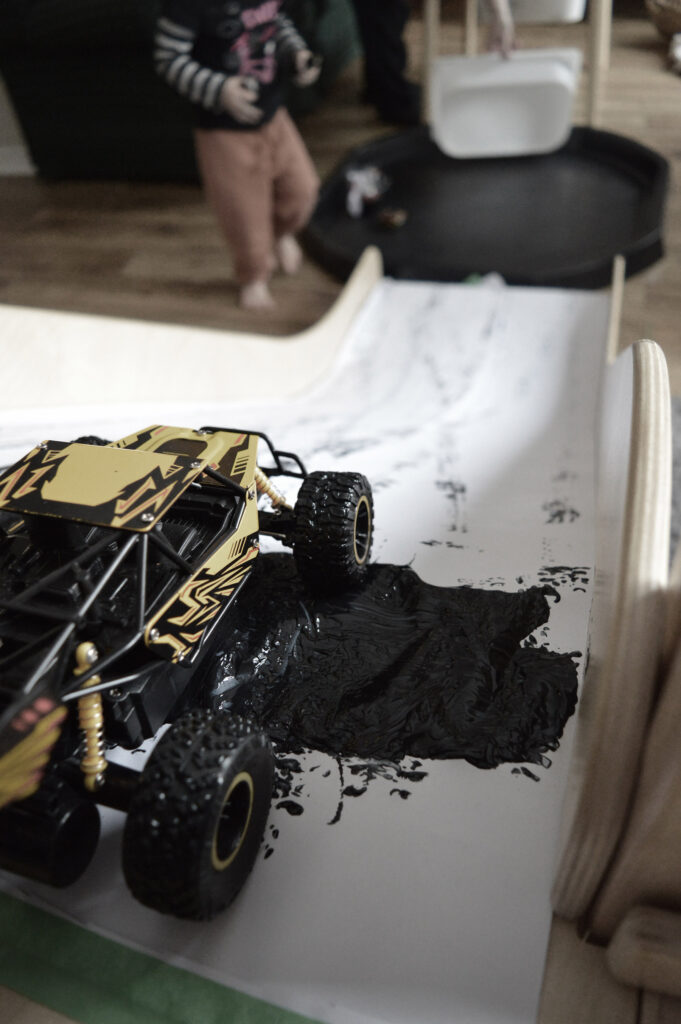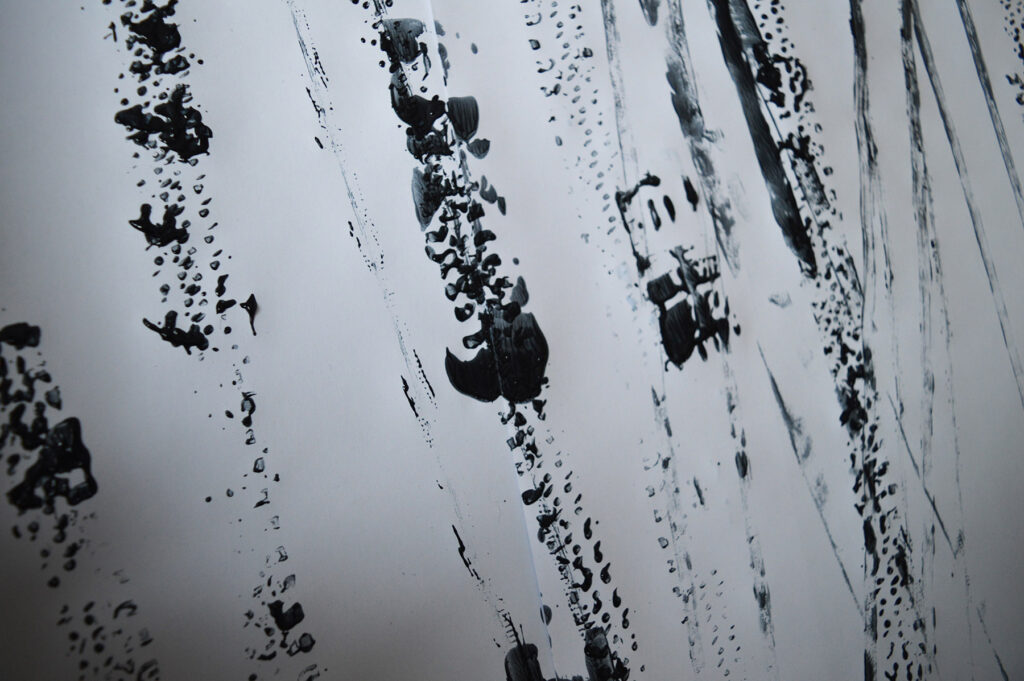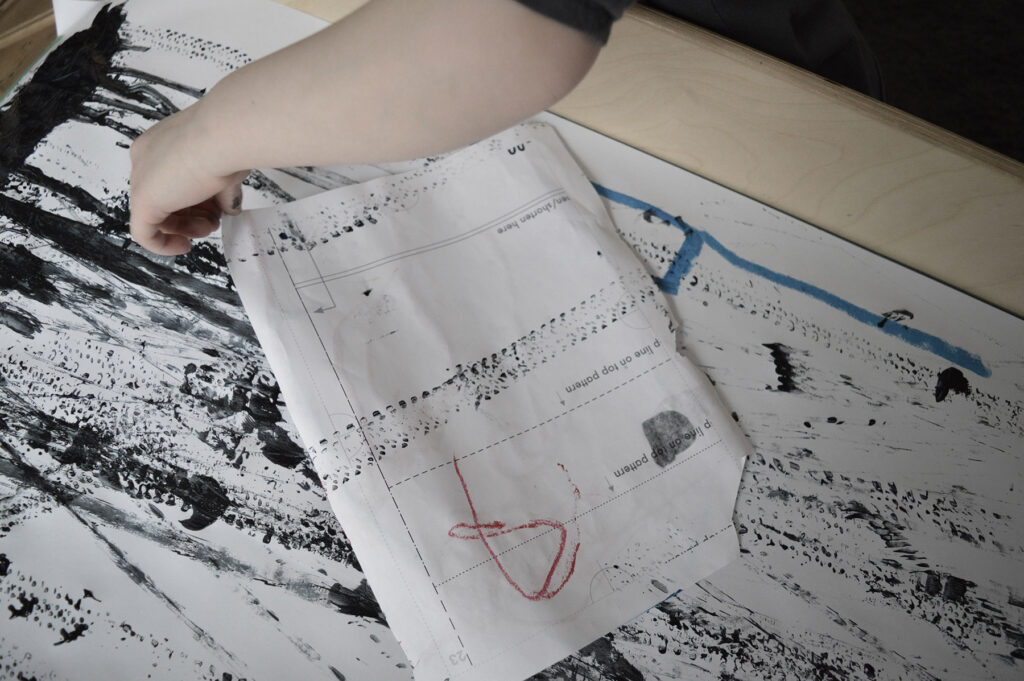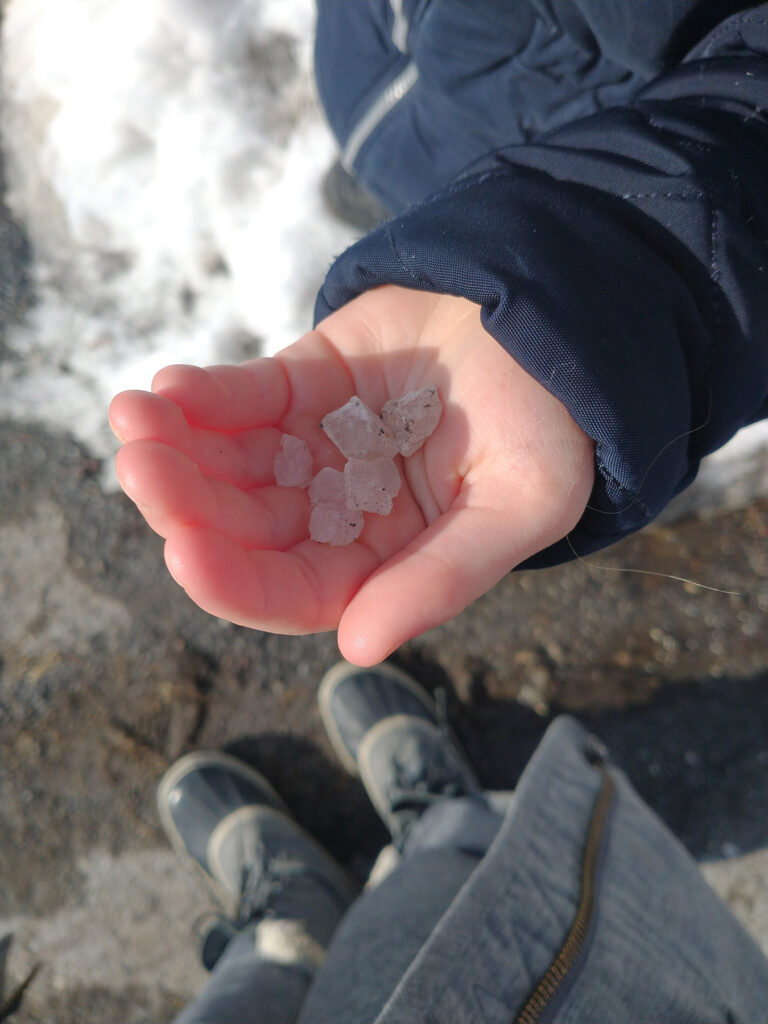
Miss 4 and I walked home along the sidewalk, and stepped aside as a sidewalk plow passed the path. Miss 4 noticed that the plow dropped something behind it as it went along, so we investigated. We found rock salt! I explained that rock salt helps melt the ice and keep it from forming. As we walked near the car, she told me that rock salt eats cars. I agreed that the salt corrodes cars, through a chemical reaction.
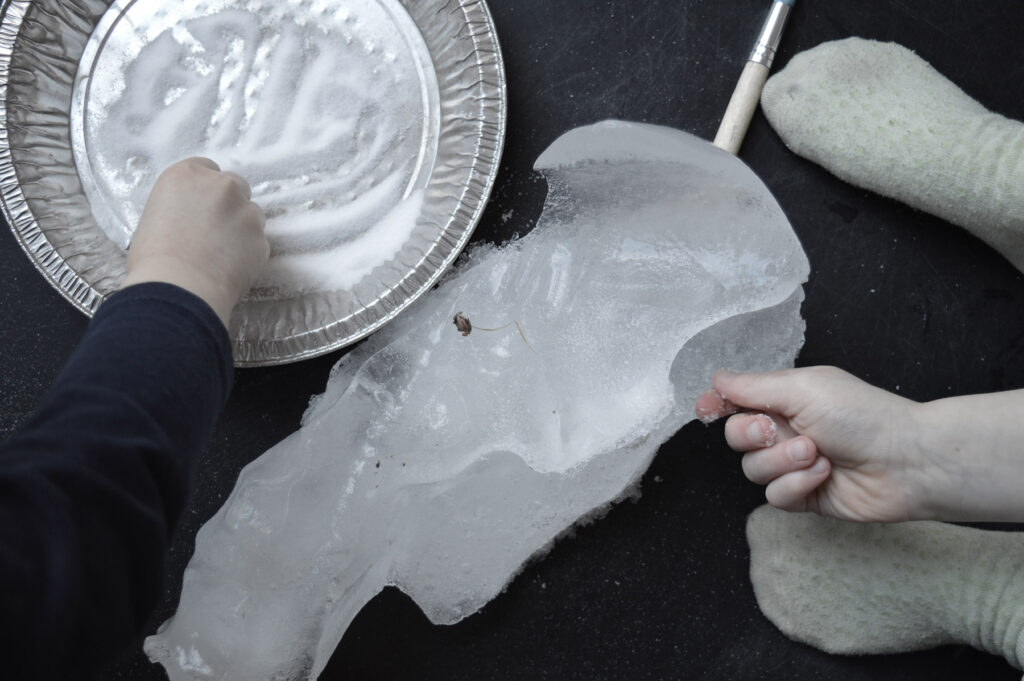
I took that teachable moment as an opportunity for a science activity. I grabbed a big chunk of ice from the backyard and put it on our Tuff tray. Table salt, from our pantry, went on a tin pan beside the ice and I invited the children to sprinkle salt over the ice with their hands, in the tray. I noticed it was difficult to see the effect the salt had on the ice so I added a paint palette, blue, purple and white paint, and some paint brushes.
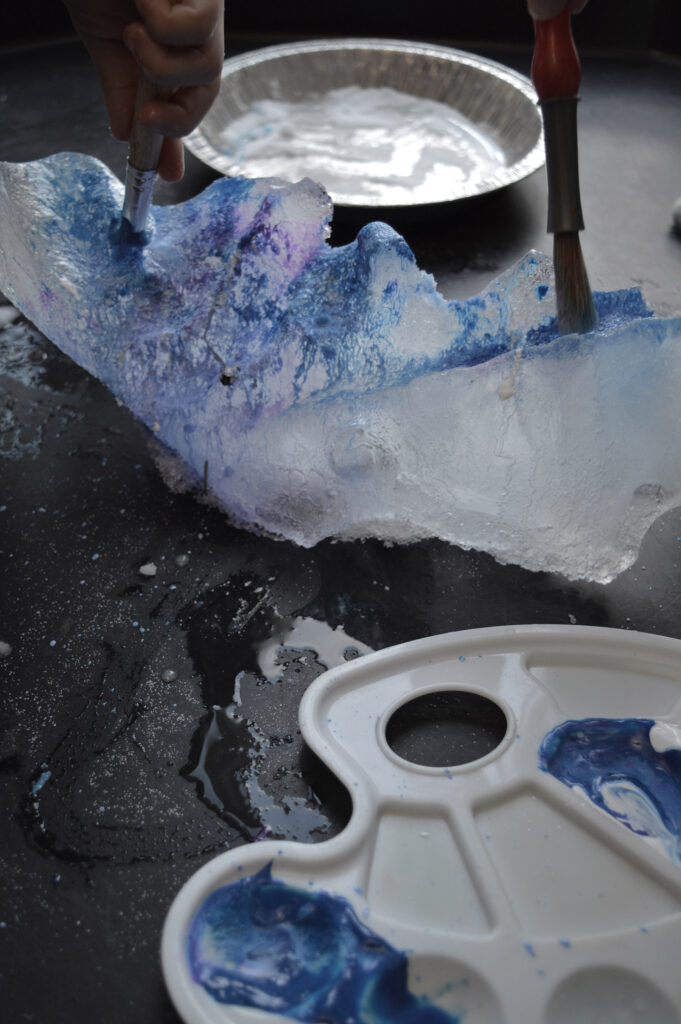
Dissolved salt and water freezes below zero degrees Celsius, while pure water freezes at zero degrees Celsius. The plow sprinkled ice on the sidewalk to keep ice from forming. The ice already on the sidewalk had a layer of water on top of it, as ice always does. Indoors, during our experiment in our heated home, the ice that I brought in began to melt. As the salt and water mixed on the chunk of ice, more dissolved salt formed, more ice melted which created more dissolved salt and the ice melted faster, etc. This happens up to a certain speed and is limited by the amount of salt, of course. The paint made the melting ice visible.
Here I added blue, purple and white paint however if I tried it again, I would add two primary colours, such as blue and red. That would add another interesting element. It would show the mixed colours, as the ice melted.
Clean up involved a bath and we continued the painting in the bathtub. When I asked Miss 4 a few weeks after this activity, she remembered that ice corrodes cars and also melts ice! When she learns more about this in grade 6 Chemistry class, she will have this earlier experience to pull from.
